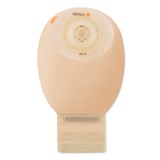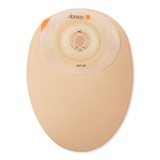Understanding Your Skin and Stoma Health
Your skin protects you in so many ways. Learn about skin anatomy and how it works, so you can take better care of the skin around your stoma.

Learn all about skin.
Keeping the skin around your stoma, or peristomal skin, healthy is vital to avoiding issues such as leakage and irritation. Knowledge of this wonderful organ (yes, skin is considered an organ) may motivate you to take good care of your peristomal skin.
Amazing skin facts
Did you know that skin is the largest organ in the human body? Another remarkable fact is that it renews itself every 26 to 42 days.
Skin has many important functions:
- It serves as a protective barrier from outside elements
- It provides immunity from bacteria and other pathogens
- It regulates blood flow and body temperature
- It allows for sensory perception
- It synthesizes vitamins
Basic skin anatomy
The outermost visible part of the skin is the epidermis, which is divided into five layers. The epidermis is relatively thin but tough. It’s mostly made up of cells that slowly migrate up toward the surface, where they are shed and replaced by newer cells from below.

The very top layer of the epidermis is called the stratum corneum. This top layer is structured a bit like bricks and mortar. Mature cells are the bricks that provide skin strength. The intercellular lipid matrix, between the cells, holds them together like mortar.
The health of the stratum corneum is essential for maintaining a protective skin barrier, as well as keeping the skin hydrated by preventing excess evaporation.
This skin environment is known as the acid mantle. The acid mantle supports the ability of the skin to serve as a protective barrier. A disturbance in pH can break down the acid mantle and make the skin vulnerable to irritation and damage. That’s why a pH imbalance can compromise the skin’s ability to protect itself.
Peristomal skin issues
Although peristomal skin starts out healthy, it often doesn’t stay that way. Several factors may affect the skin and cause breakdowns in the epidermis and an imbalance in the acid mantle:
- Leakage: Stomal fluid is corrosive to the skin. In turn, skin damage makes it more difficult to get a good skin barrier fit.
- Poor-fitting pouching system: Without a good fit around the stoma, leakage can result. Compromised adhesion can lead to leakage and skin damage.
- Mechanical trauma: Poor adhesion or an ill-fitting skin barrier can lead to too-frequent barrier changes, which may result in damaging skin stripping.

If the cause of a peristomal skin issue is not promptly addressed and solved, you may get caught up in a vicious cycle that becomes more difficult for you to manage as the severity of the issue increases. Be sure to contact your stoma care nurse immediately if you experience consistent leakage or skin irritation.
- 0 Shares
- 22 Recommended





 Email Us
Email Us  Connect with Us!
Connect with Us!  Call Us
Call Us  Sign Up
Sign Up 